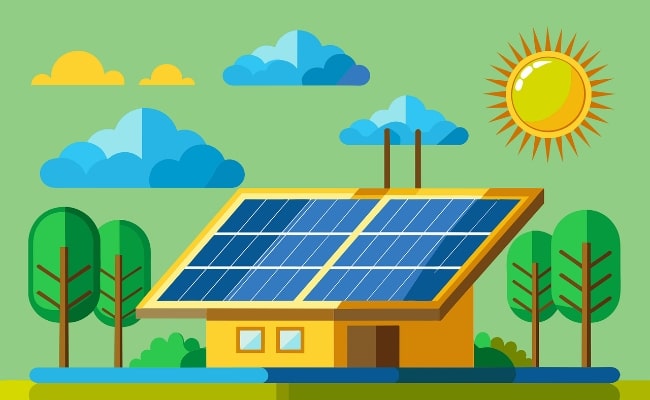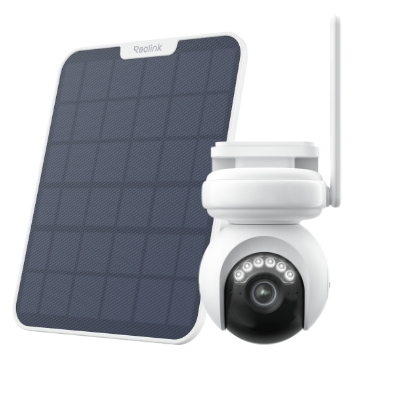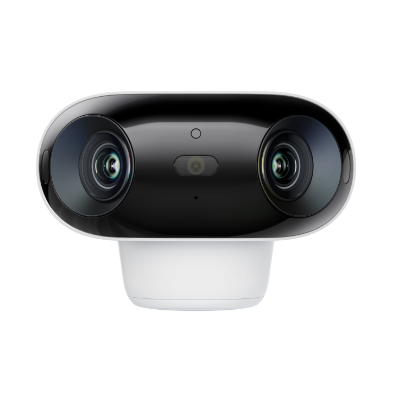Who Invented Solar Panels? Behind the Solar Revolution

We see those large and sleek solar panels installed on the roofs, giving us unmatched ease and independence from the grid system. But do you ever wonder who the credit-worthy person behind such an invention is?
If you do, do not search further because you are on the right page. Keep reading, and the forthcoming content will talk about who invented the solar panel and when it was invented, along with all the interesting facts you must have never heard before. Let's proceed.
Who Invented Solar Power?
For all those who wonder, "Who invented solar energy?" Let us break the ice for you. So, the man behind such a great invention is Edmond Becquerel. He was a young yet bright and enthusiastic physicist who worked in France in 1839.
During his practice, he observed the photovoltaic effect, which produces voltage or electricity when specific substances come into contact with sunlight or radiant energy.
His work inspired Augustin Mouchot- a French mathematician in the 1860s. He began searching and registering for patents for solar power engines, giving rise to the idea of solar power.
Who Invented Solar Panels?
Although the idea of solar power emerged early in 1839, it took years until the American inventor Charles Fritts created the first commercial solar panel in the world in 1881.
Fritt reported it as " continuous" and of considerable force when exposed to maximum sunlight but also when the light remained low. However, these panels were not equally effective as those we see today. In 1939, Rusell Ohl created the solar cell design used in modern solar panels.
Reolink finds an eco-friendly for their security cameras. Most of Reolink battery cameras can be charged using a solar panel, including the new Altas PT Ultra.
Industry-leading 4K Continuous Recording Battery Camera
4K UHD Continuous Recording; ColorX Night Vision; Pan & Tilt; Automatic Tracking; All Recordings Stored Locally.
When Were Solar Panels Invented?
The initial solar panels, invented in 1881, were inefficient. Each panel consumed hours of sunlight to generate tiny watts of power. Then, in the mid-20th century, the most practical and efficient form of solar panels was created. The idea became a commercial hit. Since then, materials and technology advancements have increased, making them a viable and widespread renewable energy source.
Brief History of Solar Panels
We have already discussed when and who generated solar power and panels, which might have made you curious about the whole process of its revolution journey. Here we present a brief history of solar panels in different stages:
First Discovery
Edmond Becquerel, the Father of solar energy, presented the initial ideas for the creation of solar panels and discovered the concept of the photovoltaic effect. According to his research, light can directly be converted to energy when semiconductive materials can be joined together to transfer photons to electrons, thus forming the electrical current.
It was discovered in 1839 when Becquerel experimented in his Father's laboratory. He placed silver chloride in an acidic solution, exposed it to the light, and connected it to the platinum electrodes. Thus, discovering that light can help in electricity generation when two electrodes are connected via a conducting solution.
After more research, Becquerel invented the phosphoroscope, which aided in the interval between light exposure and the effects that needed to be observed, varied, and measured.
Modern Solar Cells
The development of modern cells was delayed until 1954 when Daryl Chapin, Calvin Fuller, and Gerald Pearson created the first practical silicon photovoltaic cell at the famous Bell Labs.
The innovation marked the first time when technology was efficient enough to collect, convert, and supply electricity. The initial efficiency was 6%, which reached 14% by 1960 while the advancement continued.
Future Trends
The 21st observed rapid advancement in solar technology. Efforts were made to increase the efficiency, which reached 17.8% in 2022. Further research resulted in the 47.1% efficiency in 2020 under ideal conditions.
Current trends aim to increase the effectiveness and performance of solar panels and explore new materials. In addition, efforts and research have been made to integrate solar technology into the widest variety of applications, such as rooftop installations, portable charges, and alignment with the traditional grid system.
The ongoing innovations are focused on pushing the boundaries further and increasing the efficiency of solar panels equal to or near 100%. Furthermore, the trends and technology are cultivating more photovoltaic cells in compact-sized solar panels to cut costs and increase space efficiency.
Where Can Solar Energy Be Used?
Solar panels can be used in an extensive range of areas, including the following:
-
Residential power: Solar panels are increasingly popular among households due to their unmatched ease. By installing solar panels on the rooftop, they can enjoy a reliable and eco-friendly solution for their energy needs; it is a one-time cost that can save households from utility bills while decreasing their carbon footprint.
-
Commercial buildings: Commercial spaces have also started installing solar systems. Thus, they are converting to solar energy to enhance their sustainability and reduce operating costs. They can install panels in office buildings, shopping centers, and other facilities to lower electricity costs. Today, multiple businesses harness the power to meet corporate needs while being environmentally responsible.
-
Solar-powered electronics: Solar energy's versatility has expanded to solar-powered electronics, such as security cameras. Such devices benefit remote locations where traditional power resources are not present. Rechargeable batteries can make the cameras function for hours.
4k 180° Wire-free Color Night Vision Camera
4K UHD 180° Blindspot-free View; Color Vision Day and Night; 30% More Battery Life; Dual-band Wi-Fi 6; Smart detection.
- Public infrastructure: Solar energy also enormously contributes to public infrastructure. Thus, providing a sustainable solution for multiple sectors, including agriculture, transportation, etc., such as solar power streetlights and traffic signals today contributes to establishing safe and energy-efficient roadways. Similarly, the agricultural sector uses technology to attain operational efficiency by reducing reliance on fossil fuels.
FAQs
Who created the first solar panel?
Although solar panels were introduced way earlier, the first practical solar panel existed in 1954. It was created by Daryl Chapin, Calvin Fuller, and Gerald in Bell Labs. However, silicon photovoltaic cells also marked a significant breakthrough in converting sunlight into electricity.
Who is the Father of solar panels?
Edmond Becquerel is also known as the Father of solar energy. He discovered the photovoltaic effect in 1983, and it was only because of his discovery that the world noticed the potential of sunlight for creating energy. Becquerel's work laid the groundwork for further developments in solar technology.
When did the US start using solar panels?
The US began using the solar panel more practically in the 1950s. Nevertheless, the country's significant adoption started in the 1970s and beyond. The growth was driven by people's convenience and the increasing awareness about social responsibility.
Conclusion
On the bottom line, solar panels are trendy today as they help one become independent from the traditional grid system, grant green solutions for energy generation, etc. Multiple people are involved in the efforts to form the solar panels we see today.
The idea came into being by the 19-year-old physicist Edmond Becquerel; it took decades for the solar panel to reach the form we see today. The exciting journey of the whole process is discussed above in the content. If you found it helpful, share it with your friends and family. Also, let us know your feedback in the comment section below.
Search
Subscribe for the Latest Updates
Security insights & offers right into your inbox


